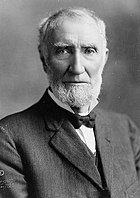United States House of Representatives elections, 1906
|
|
|||||||||||||||||||||||||
|---|---|---|---|---|---|---|---|---|---|---|---|---|---|---|---|---|---|---|---|---|---|---|---|---|---|
|
|||||||||||||||||||||||||
|
All 391 seats to the United States House of Representatives 196 seats were needed for a majority |
|||||||||||||||||||||||||
|
|||||||||||||||||||||||||
|
|||||||||||||||||||||||||
Elections to the United States House of Representatives in 1906 were held for members of the 60th Congress, in the middle of President Theodore Roosevelt's second term.
As in many midterm elections, the President's Republican Party lost seats to the opposition Democratic Party, but retained a large overall majority. Dissatisfaction with working conditions and resentment toward union busting among industrial laborers in the Mid-Atlantic and Midwest caused these groups to turn out to the polls in large numbers in support of the Democratic Party. However, gains in these regions were not enough to remove the Republican majority or the firm support that the party held among the middle class.
Five new seats were added for the State of Oklahoma, admitted on November 16, 1907.
In 1906, three states, with 8 seats among them, held elections early:
Oklahoma was admitted in 1907 and held its first congressional elections on September 17, 1907.
Party abbreviations
...
Wikipedia


